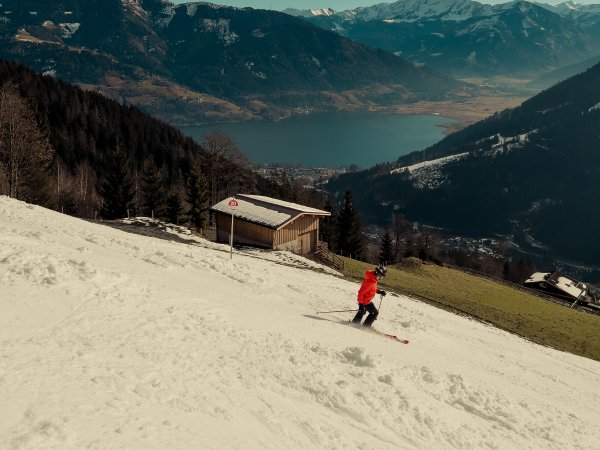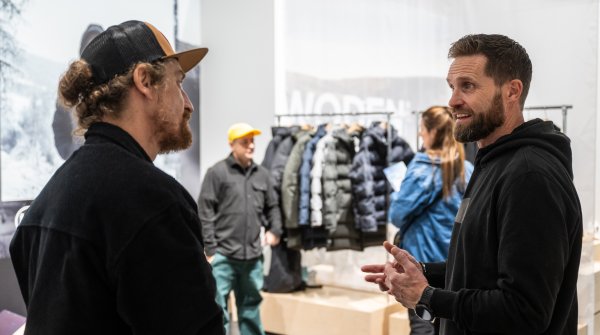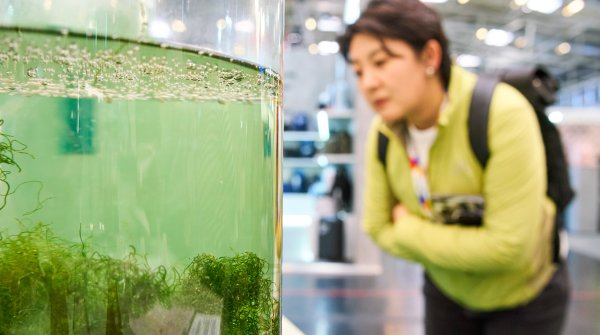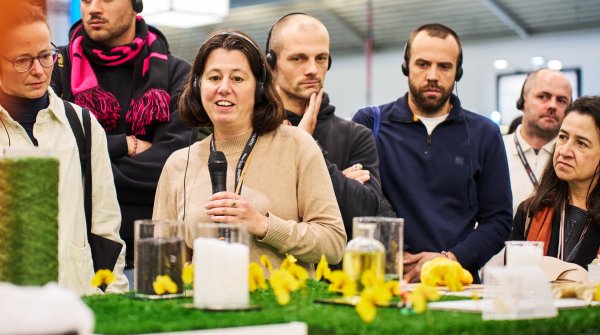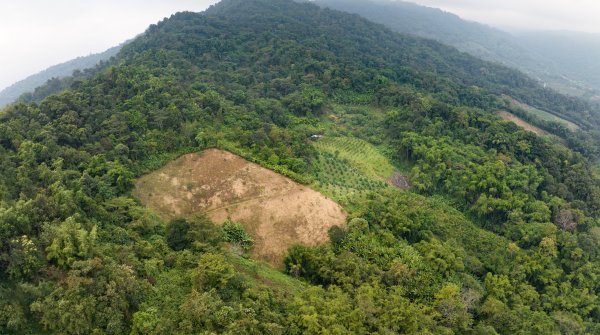Everything you need to know about geo- or climate engineering:
Climate change is not really that tangible for most people. It's more of a diffuse, subjective feeling. Somehow it is warmer. Somehow there is less snow. Environmental experts, however, know that yes, there are significant changes. According to the Bavarian State Office for the Environment, precipitation has decreased by 13 percent in the summer months from June to August. On the other hand, heavy rainfall is more frequent in the spring. The weather is an indicator of climate change. We can all observe it, right on our doorstep. In winter, too.
For skiers, climate change is no longer yesterday's news. The current winter was not the first to reveal the dilemma facing ski tourism. In some ski resorts, puny white slopes wind their way across brown pastures. Natural snow? No chance. The lack of snow no longer only affects the low mountain ranges and the foothills of the Alps. A 30-year comparison shows: in 2023, there is clearly too little snow in the Alps. Only about 55 percent of the Alps have a more or less closed snow cover. For years now, people in the Alps have been taking various measures to counteract what is happening faster and faster. According to estimates, around 82,000 snow cannons provide "snow security" throughout the Alps. The number has doubled since 2016. The amount of water needed for skiing fun alone is massive. Four times more than the megacity of Munich consumes in a year. Many snowmaking systems have to be moved further and further up the mountain so that the effect doesn't fizzle out after a few days.
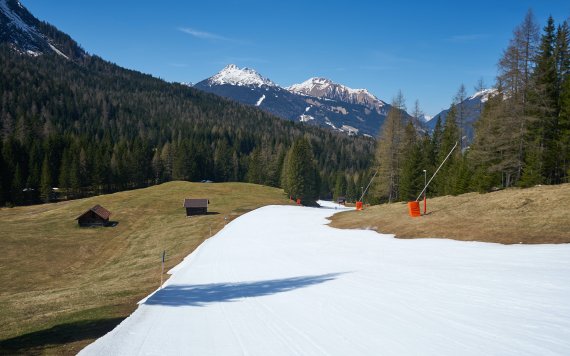
But even high up on the mountain, the air has become thin. On the Rettenbachferner in the Ötztal Alps, piste operators start snowfarming as early as May. At an altitude of 3,000 meters, huge amounts of snow are pushed together and protected from melting away with special tarps. Up to 70 percent can thus be preserved until the start of the season. And they have to, because tourism is of great importance to the Austrian economy. According to the Austrian Federal Economic Chamber, winter sports alone generated 14.9 billion euros in sales before the Corona pandemic. Winter sports bring money into the coffers, both in the Alps and in the low mountain ranges.
Snow management" by means of snow groomers and snow-making equipment can still keep ski tourism going. However, it is also clear that enormous amounts of energy are required for this. Resources that should actually be conserved in order not to exacerbate climate change even further. At the moment, global efforts to radically reduce greenhouse gas emissions are not where they should be.
If too little continues to be done, then temperatures in the Alps could rise by up to 4 degrees Celsius by the end of the century. The consequences for ski tourism would be dramatic. Below 500 meters there would be no more natural snow, up to 1,500 meters the snow cover would decrease by up to 80 percent, at higher altitudes by up to 60 percent.
That's where geoengineering comes in. Climate engineering has been dealing for several decades with the question of how the earth's climate system could be deliberately influenced by technical measures. The big question is: What part can climate and geoengineering play in reducing CO2-concentration in the atmosphere and the associated global warming? In the end, is it possibly just a catch fence when the runway runs out? Or will it even trigger an entirely different avalanche?
Italian physicist Cesare Marchetti was instrumental in coining the term geoengineering in the 1970s. His proposal was to prevent harmful carbon dioxide from entering the atmosphere in the first place by collecting it directly at coal-fired power plants and oil refineries and then storing it permanently. This is just one method of Carbon Dioxide Removal (CDR). Norway and Denmark have already started doing just that. The collected CO2 is liquefied and injected deep below the seabed in the North Sea. That's where it's supposed to stay. Hopefully! Because there is a risk that it could escape again. Potential damage to ecosystems? Unknown.
In Germany, the CDR process has not yet been approved. However, the topic itself is already part of the policy. This is because CDR is considered an effective method that can complement the reduction of greenhouse gas emissions. However, the front runner is afforestation. It still has the largest share of total CDR measures at 99.9%. This is because trees store CO2. At LMU Munich, Dr. Havermann coordinates the scientific summary of the CDRterra research program, which is supported by the German Federal Ministry of Education and Research. "All CDR measures must be socially accepted, politically desired and ecologically and economically sensible," is Havermann's stance. And that's where reforestation also reaches its limits. "As things stand, we would have to double the current reforestation. That's a lot of pressure to put on the land surface. That's where conflicting goals will arise," Havermann says.
The breakthrough in thinking about how technical means could be used to intervene in the earth's geochemical cycles came, incidentally, from a volcanic eruption in 1991. Pinatubo erupted in the Philippines. At the time, it claimed the lives of 875 people, and tens of thousands lost their homes. The eruption was so powerful that several million tons of sulfur dioxide were released into the stratosphere, three times as high as commercial airliners fly. And then, after a few days, a remarkable phenomenon occurred. Due to the suddenly high concentration of sulfur aerosols and the reduction of sunlight as a result, the entire Earth became 0.5 degrees Celsius cooler.
This event led to the idea of having airplanes inject sulfur particles into the stratosphere on a large scale. The bad news: To cool the planet down one degree Celsius a year, you would need 7,000 airplanes a day. Not technically impossible. But extremely expensive, not only materially, but also for all people. In the future, the sky would no longer be bright blue, but rather milky. Worldwide, precipitation could decrease on average, and the monsoon and major air currents in the atmosphere could also change as a result of this experiment. So should we really play environmental god?
There is no shortage of other ideas for what could be possible in Wonderland Earth. Cloud ships could also provide cooling for the planet. They would generate white clouds around the clock by means of seawater in order to increase the Earth's reflective capacity. Again - isn't this perhaps setting off a completely different unintended chain reaction? Precipitation could decrease, entire harvests could fail. This could then end in political, social and warlike conflicts. There is currently no clear legitimization of such measures in international law either. Who regulates global temperature? Very many open questions, even more risks. That is why even the United Nations Intergovernmental Panel on Climate Change advises against methods that alter solar radiation.
So is the price we would pay with geo and climate engineering too high? Possibly. Is it still worth thinking about geoengineering? Yes.
And what about ski tourism? Doesn't every skier already have a bad ecological balance? Shouldn't skiing per se be questioned in favor of the climate? Ulrike Pröbstl-Haider, Professor of Landscape Development, Leisure and Tourism at the University of Natural Resources and Applied Life Sciences in Vienna, says: "Ski tourism is not the problem. The Federal Environment Agency in Austria has calculated that tourists who board an airplane or a cruise ship have a much worse ecological balance. In contrast, ski tourism is downright saintly." The greatest CO2-footprint that most ski tourists leave in the snow is not on the slopes, but by traveling there by car. Therefore, gentler tourism and the responsible use of it are coming more and more into focus. This applies to operators, as well as to each individual skier. "Everyone should ask themselves the question, does the ski trip have to be on the weekend?" says Dr. Felix Havermann.
There is no answer to the question of whether geo- or climate-engineering can have a lasting impact on ski tourism. Research has only just entered the gondola and is far from reaching the summit. Ultimately, geo- and climate-engineering are comparable to the hangover that hits you after a boisterous après-ski party. You can try to fight the hangover with lots of water, rollmops and counter beer. It would have been better not to let it get that far in the first place. But of course it's not that simple. Doing without is often difficult, but it can pay off. Less is more. Today more than ever.
What is geoengineering?
Geoengineering or climate engineering is about changing the geochemical or biochemical processes of the earth through deliberate, large-scale interventions. The aim is to slow down, compensate for or even reduce global warming.
The two terms are often used interchangeably, but they do not mean the same thing. Climate engineering is about intentionally affecting the climate, while geoengineering is primarily focused on the environment. Modifying coastlines, diverting water bodies or whitening roofs in urban areas are examples of this.
1. Solar Radiation Management (SRM) aims to reduce incoming solar radiation in order to cool the earth. This is where the Intergovernmental Panel on Climate Change currently warns against most measures.
2. Carbon Dioxide Removal (CDR) has been instrumental in reducing harmful CO2-in the eye. It is to be sucked out of the air or removed from the atmosphere in order to store it permanently. Here, even the Intergovernmental Panel on Climate Change is of the opinion that in the context of net-zero greenhouse gas emission targets, it will ultimately not be possible to achieve CO2-removal.
Some methods intervene massively in the climate cycles of nature. The consequences and effects are still partly unclear, little researched and exist only in simulation models. Therefore, in addition to intended positive effects, there are also unintended negative effects.
Advantages:
- Currently, it does not look like we can decisively reduce emissions globally through our behavior. Geo- or climate-engineering can help as a "contingency plan". This is because the global temperature of the earth can actually be deliberately changed by some actions.
- Removing carbon dioxide from the air (CDR) poses fewer risks than Solar Radiator Management (SRM) in some cases. To meet climate goals, the Intergovernmental Panel on Climate Change does not rule out CDR.
Disadvantages:
- The danger is obvious: geo and climate engineering can quickly be used as an excuse for less climate action. Why CO2 reduction when climate engineering exists?
- Many measures are still in the development phase and are based on model calculations and simulations. Possible consequences and the triggering of unintended chain reactions are difficult to predict. Even the risks involved in field tests would be extremely high. This applies above all to solar radiator management.
- Many methods are extremely expensive. They also require a lot of energy, raw materials, and produce additional emissions.
- Change in rainfall patterns and entire crops could fail, especially with SRM interventions. Entire Ecosystems could be destroyed.
- Injection of sulfur oxide into the stratosphere could further damage the ozone layer, the sky would bleach, acid rain would fall from the sky. Solar panels would be able to deliver less power.
- The question of sustainability of the measures? Completely open.
- Unknown, unpredictable impacts that could be different regionally.
- Extremely high costs.
- In terms of international law, there is no valid set of rules yet. Who wears the hat, who is allowed to regulate the temperature on earth? Will this be decided by a supranational control?
- Political, social, but also warlike conflicts could arise.
- ISPO awards
- Mountain sports
- Bike
- Design
- Retail
- Fitness
- Health
- ISPO Job Market
- ISPO Munich
- ISPO Shanghai
- Running
- Brands
- Sustainability
- Olympia
- OutDoor
- Promotion
- Sports Business
- ISPO Textrends
- Triathlon
- Water sports
- Winter sports
- eSports
- SportsTech
- OutDoor by ISPO
- Heroes
- Transformation
- Sport Fashion
- Urban Culture
- Challenges of a CEO
- Trade fairs
- Sports
- Find the Balance
- Product reviews
- Newsletter Exclusive Area
- Magazine
